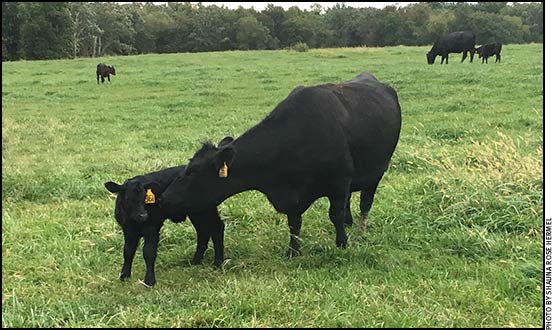
Expert Warns Screwworms Could Have Huge Impact on Livestock
Southern and Southwestern cattlemen on high alert after screwworms are discovered in Florida.
The return of screwworms would deal a severe blow to the ranching and hunting industries, said a Texas A&M AgriLife Extension Service veterinary entomologist at Stephenville.
The observation by Sonja Swiger came as the result of the flesh-eating pest being confirmed in Florida.
Swiger said Thomas Hairgrove, AgriLife Extension veterinary specialist at College Station, gave a presentation to producers Oct. 7 at Stephenville during which he said the cost to control the pest today in cattle alone could easily exceed $500 million annually.
“Dr. Hairgrove also mentioned a price tag of $1 billion would be needed annually to eradicate screwworms from their former range, should it become re-established,” she said. “Some in attendance at Dr. Hairgrove’s presentation had no idea of the gravity of the issue. That’s understandable, as the last reported case in the United States was decades ago.”
The current infestation in deer is isolated to one of the Florida Keys, Swiger said.
“Officials have blockaded the road to stop animal movement there now, but it is not known if any had moved to other areas of Florida before the discovery,” Swiger said. “They are using pesticides and releasing sterile male screwworm flies, which is the technique that finally eradicated the pest from the U.S.”
Swiger said the primary or New World screwworm is a serious pest of all mammals, including livestock, wildlife, birds and humans, though its presence is rare but possible in birds and humans.
“The primary screwworm, the ‘worm’ being the larval stage of a fly a bit larger than a housefly, is different from all other blow flies in the U.S.,” she said. “The difference is that it infests and feeds on living tissue in live animals. In contrast, blow flies feed on carrion and rotting meat.”
Swiger said the female screwworm fly is attracted to wounds or mucous tissue on animals where she lays several hundred eggs. The larvae soon hatch and live inside the wound. As the wound festers, more females are attracted and lay their eggs.
“I have heard stories from back when Texas was infested with them, as they were ‘officially’ listed as eradicated from the U.S. in 1966, 13 years before I was born,” Swiger said. “But back when they were around it was reported that infestation rates of calves were often 100%. Infestations, if left untreated, usually led to the death of the animal.
“If not stopped, this pest would be catastrophic to the livestock and wildlife industries," she continued. "Calves got the worst of it after birth before their navels had time to dry and heal. Dehorned animals were another prime host. Even ear tagging, vaccinating and slight shearing nicks on sheep were enough to bring on a fly strike. It does not have to be a large wound to attract female flies.
“Think about it, if screwworms returned, it could be the end of part-time ranching. Except for the dead of winter, stockmen would have to constantly watch their stock for ‘wormies,’ " she said. "White-tailed deer, which give birth in warm weather, and bucks in velvet with blood-engorged antlers, I expect would be easy targets, as well.”
After decades of trying to manage around screwworms in various ways, it was clear eradication was the only option to end the heavy losses, Swiger said.
“The flies’ Achillies’ heel is the female’s habit of only mating one time,” Swiger said. “Once researchers discovered this fact, they could proceed with eradication strategies. The eradication program consisted of irradiating captive male flies, [rendering] them sterile. The sterile flies were dropped from airplanes into areas where screwworms were present. When large numbers of sterile males were released into infested areas, native females would mate with the sterile males and then lay infertile eggs. This worked, not overnight, but it did work.”
Today, Swiger said, the pest has been eradicated all the way down to the Panama Canal, and a sterile fly-producing facility is still in production in Panama.
“It is unknown at this time where this new Florida outbreak originated,” Swiger said. “If there is a silver lining to this dark cloud, it’s that the outbreak is on one of the Key islands, very far south and fairly isolated from the mainland. And, luckily, the Keys did not get a direct hit from Hurricane Matthew, so we should not see a spreading issue there.”
Swiger said the last screwworm captured in the United States before this recent incursion was in 1982, before today’s younger ranchers and outdoorsmen were born.
“This flesh-eating pest has the capability to cause extensive damage in the southern and southwestern U.S.,” she said. “So, it is critical that people know about it and be on the lookout for it, so we can stop screwworm reinfestation early if it shows up here again.”
For more information, go to: http://livestockvetento.tamu.edu/insectspests/
screwworm-fly/.

Editor’s Note: Steve Byrns is a communications specialist with Texas AgriLife Communications.






